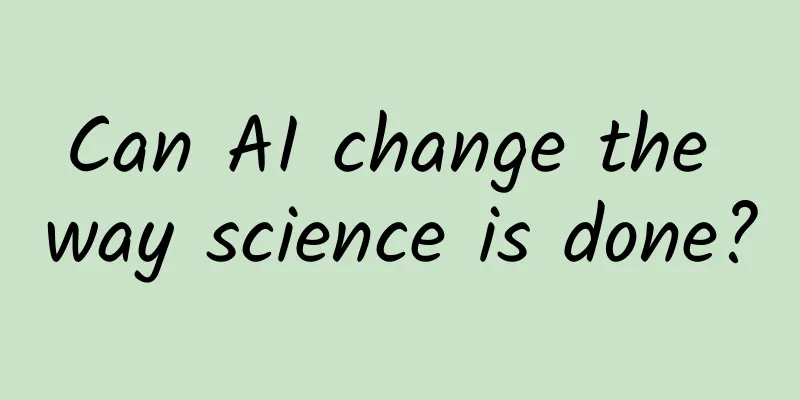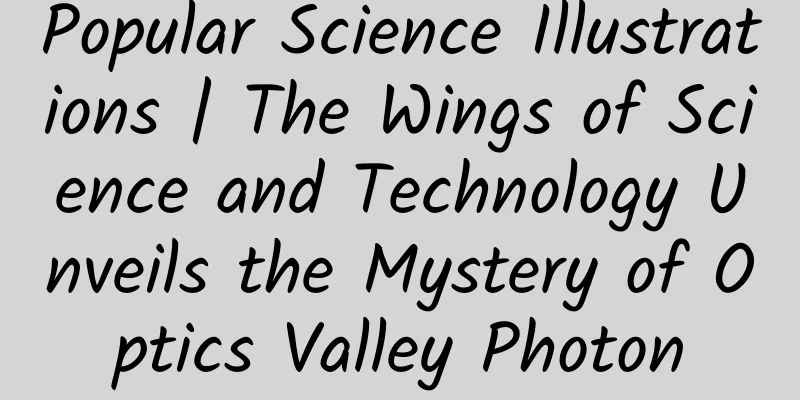Can AI change the way science is done?

|
Artificial intelligence (AI) is shaping the scientific field in unprecedented ways. From accelerating the research process to generating new research hypotheses, the addition of AI brings tremendous potential to science. Earlier this year, Yann LeCun, one of the godfathers of modern AI, said: “By augmenting human intelligence, AI could spark a new Renaissance, perhaps a new phase of the Enlightenment.” Today, AI can make some existing scientific processes faster and more efficient, such as discovering new antibiotics, new materials for batteries and solar panels, predicting short-term weather, controlling nuclear fusion, etc. Demis Hassabis, CEO of Google DeepMind, compared AI to a telescope, believing that "AI may bring about a new renaissance of discovery and become a multiplier of human wisdom." However, can AI do more by changing the way science itself is done? Literature-based discovery: AI leads the way in mining scientific knowledge In fact, this shift has happened before. With the advent of the scientific method in the 17th century, researchers began to trust experimental observations and the theories derived from them rather than the traditional wisdom of the past. The establishment of research laboratories in the late 19th century led to a surge in innovations in fields ranging from chemistry to semiconductors to pharmaceuticals. These shifts not only increased scientific productivity, they transformed science itself, opening up new areas of research and discovery. So, at that time, how could AI achieve a similar transformation, not just generating new results, but also new ways of generating new results? One promising approach is literature-based discovery (LBD). As an AI method, LBD aims to make new discoveries by analyzing scientific literature. As early as the 1980s, Dr. Don Swanson of the University of Chicago established the first LBD system to find new associations in the medical journal database MEDLINE. One of the early successes of this method was to associate Raynaud's disease (a circulatory system disease) with blood viscosity and to propose the hypothesis that fish oil might be useful for treatment, which was later confirmed experimentally. However, the impact of LBD systems at the time was limited. Today, AI has made significant progress in natural language processing (NLP), and the amount of scientific literature has increased significantly, making the LBD method more powerful. For example, in 2019, researchers at the Lawrence Berkeley National Laboratory in the United States used unsupervised learning techniques to analyze abstracts of materials science literature and convert them into mathematical representations, known as "word embeddings." This method allows AI systems to gain "chemical intuition" and propose new materials that may have specific properties. After experimental verification, all of the top ten candidate materials showed excellent performance. Recently, a paper published in the journal Nature Human Behavior by sociologists Jamshid Sourati and James Evans from the University of Chicago expanded this approach in a novel way. The researchers trained a system to consider both concepts and authors and achieved better results than before. In addition, they asked the system to avoid mainstream research directions and identify "alien" hypotheses that are unlikely to be discovered under normal circumstances. This method not only helps accelerate scientific discoveries, but also reveals new "blind spots." Today, LBD systems can not only generate new research hypotheses, but also identify potential partners and promote interdisciplinary collaboration. The application of this method is being expanded to process different types of documents such as tables, graphs, and data, providing scientists with a wider range of support. Robot scientists: AI revolutionizes the lab Robot scientists represent another exciting development that goes beyond traditional laboratory automation. They gain background knowledge about a particular area of research in the form of data, research papers, and patents, then generate hypotheses, perform experiments, evaluate results, and ultimately discover new scientific knowledge. Aberystwyth University's "Adam" is a pioneering robot scientist who has for the first time made autonomous discoveries of new scientific knowledge, with experiments on the relationship between genes and enzymes in yeast metabolism being a typical example. More sophisticated robot scientists, such as Eve, use machine learning to create “quantitative structure-activity relationships” (QSARs) — mathematical models that relate chemical structures to biological effects — when planning and analyzing experiments. Eve has already been used in drug discovery, successfully finding that triclosan, an antimicrobial compound used in toothpaste, inhibits a key mechanism in the parasite that causes malaria. Once, it seemed like it would take decades for machines to defeat the best human players, but technology is advancing faster than expected. As roboticists become more capable, it’s not too far off to see them compete with AI systems that can play chess. Ross King, an AI researcher at the University of Cambridge who created Adam, said, “If AI can explore the entire hypothesis space, or even expand it, then it might show that humans are only exploring a small part of the hypothesis space, perhaps due to their own scientific biases.” Robot scientists have changed scientific research in a unique way by solving the efficiency problem in the scientific field. The efficiency of scientific research has gradually decreased, making it difficult to advance the frontier of knowledge. Robot scientists can solve this problem through AI-driven systems because machines can perform laboratory work faster, cheaper, and more accurately than humans, and can work around the clock. In addition, they can provide reproducible experimental results, alleviating the reproducibility crisis. The potential and challenges of AI in science Although AI has great potential in science, it also faces several challenges. In addition to better hardware and software and tighter integration between the two, there is a need for greater interoperability between laboratory automation systems, as well as common standards that allow AI algorithms to exchange and interpret semantic information. Another obstacle is scientists' lack of familiarity with AI-based tools. In addition, some researchers worry that automation will threaten their jobs. However, Dr. Yolanda Gil, a computer scientist at the University of Southern California, said AI’s impact is now “profound and pervasive.” Many scientists are now “actively seeking AI partners.” Awareness of AI’s potential is growing, particularly in materials science and drug discovery, where practitioners are building their own AI systems. In general, scientific journals have changed the way scientists discover information and learn from each other. Research labs have scaled up and industrialized experiments. By expanding and combining the first two changes, AI can indeed change the way science is done. Reference Links: https://www.economist.com/science-and-technology/2023/09/13/could-ai-transform-science-itself https://www.economist.com/science-and-technology/2023/09/13/how-scientists-are-using-artificial-intelligence Author: Hazel Yan Editor: Page === |
<<: Although we are in the Milky Way, we know the true face of the Milky Way
Recommend
Home appliance companies are embracing the Internet, and the air conditioning industry is catching up with the wave of intelligence
Earlier this year, Google acquired Nest, a leader...
How to arouse users’ interest in 15 seconds?
Suppose your company is holding a food tasting ev...
Lizard Squad went too far: selling attack services, members arrested
[[125563]] If there is a keyword in the technolog...
How to develop a complete user growth system architecture?
If you learn the right principles in the field of...
[Apple changes the rules again] AppStore/Featured Recommendations: What does the sudden revision mean to developers?
Those who like to pay attention to the mobile App...
How did the chicken, a “little cowardly bird”, conquer the world step by step?
© JOHN TOWNER Leviathan Press: What's your fa...
How do Apple devices greet each other? - An interesting talk about the Bonjour protocol
Students who use Apple's full range of servic...
For an in-depth analysis of oCPC, just read this article!
I have wanted to talk to you about conversion bid...
5 things you need to think about before building an Internet platform!
People who have been in the Internet circle for s...
CCTV "Lecture Room" program series video 179 episodes 2641 episodes Mandarin Chinese subtitles collection Baidu cloud download
"Lecture Room" is a lecture-style progr...
Why does the more you drink Coke, the thirstier you get? Here comes the truth
Many people like to drink a bottle of Coke when t...
What new ways are there to distribute short videos across the entire network and create hits?
Nowadays, short videos have become a new trend th...
After analyzing 670 million mobile app push notifications, we saw several interesting trends:
Push notifications are the cornerstone of every m...
Can opening an opening in the Himalayas change the climate between China and India?
Decades ago, someone planned to blast a hole in t...









